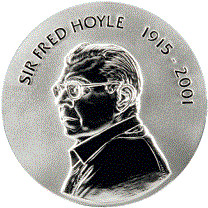On June 2019, Professor Gilles Chabrier was awarded for his seminal contributions to a variety of astrophysical domains, from planetary to stellar and galactic astronomy.
The so-called Saumon-Chabrier theory, extending Gilles Chabrier's pioneering work, represented the first complete theory of hydrogen pressure ionization, a long standing problem in physics. The theory led to the derivation of the Saumon-Chabrier-van Horn equation of state, which has remained the standard in stellar and planetary calculations for over 20 years.
Chabrier also thoroughly explored the physics of phase transitions in white dwarfs and, with his student Segretain, showed that crystallization of the carbon-oxygen mixture in their interiors leads to a substantial cooling delay. This solved the discrepancy between white dwarfs and globular clusters for dating the galaxy. He also showed that ions inside massive white dwarfs are in a quantum state, which bears important consequences for the cooling, thus the fate of these objects. All these studies were major breakthroughs in our understanding of the properties of dense astrophysical bodies, from giant planets to neutron stars.
With his main collaborators, Baraffe and Allard, he developed a complete theory of low-mass star and brown dwarf structure and evolution. This theory was the first one able to adequately describe the mechanical, thermal and spectral properties of these objects, allowing us to understand their behaviour. Chabrier and Baraffe then extended their calculations to the study of extrasolar planets and pioneered the theoretical development of this field.
Chabrier also made major contributions to galactic astronomy. His work on the baryonic content of the galaxy or his prediction (verified a posteriori) of a population of faint, primordial white dwarfs in the galactic stellar halo, were major breakthroughs. But of noticeable importance is his determination of the galactic stellar and substellar initial mass function, which led to the first accurate determination of the stellar and brown dwarf census, and has become the standard in all galactic evolution calculations.
Fred Hoyle Medal and Prize
 Fred Hoyle was an English astrophysicist who developed the theory of stellar nucleosynthesis, which describes how elements heavier than helium are produced by nuclear reactions within stars. Hoyle directed Cambridge University’s Institute for Astronomy for six years, and was a fellow of the Royal Society and a winner of its Royal Medal as well as the Royal Astronomical Society’s Gold Medal.
Fred Hoyle was an English astrophysicist who developed the theory of stellar nucleosynthesis, which describes how elements heavier than helium are produced by nuclear reactions within stars. Hoyle directed Cambridge University’s Institute for Astronomy for six years, and was a fellow of the Royal Society and a winner of its Royal Medal as well as the Royal Astronomical Society’s Gold Medal.
The Fred Hoyle Medal and Prize is awarded for distinguished contributions to astrophysics, gravitational physics or cosmology.






